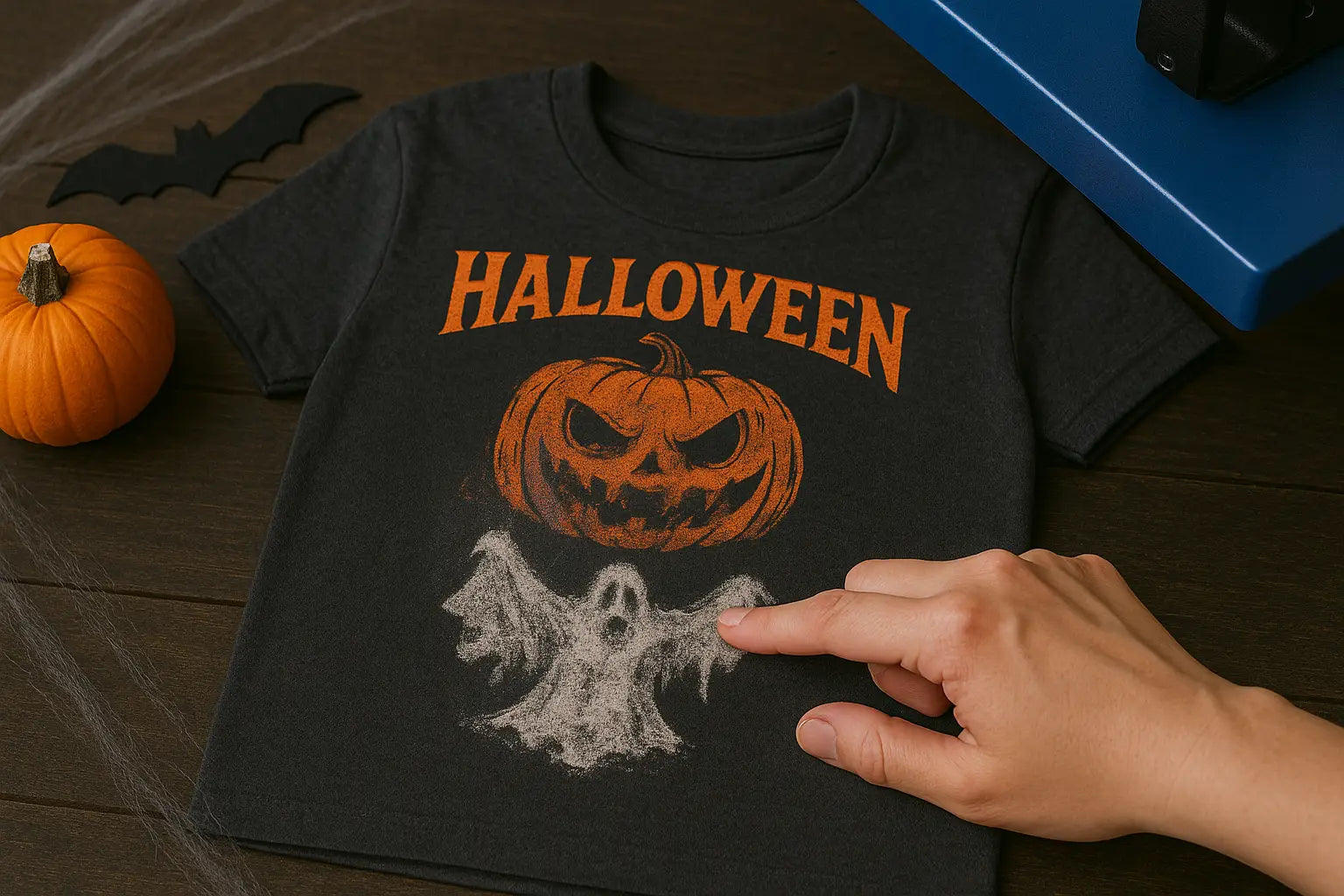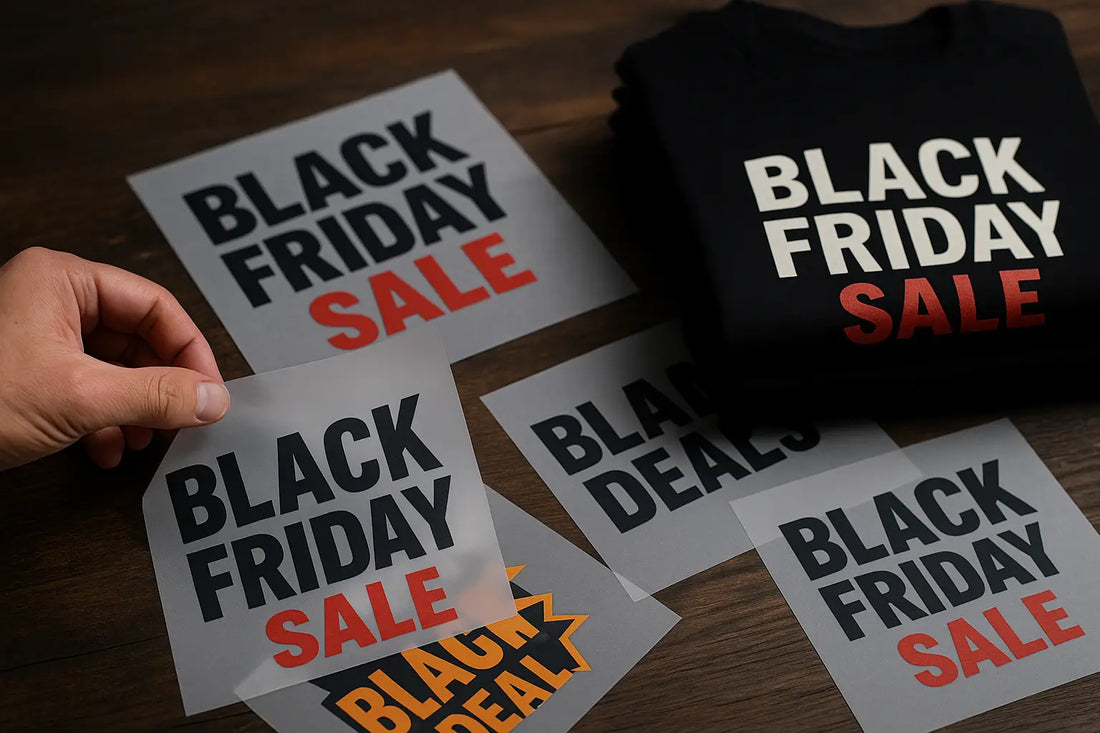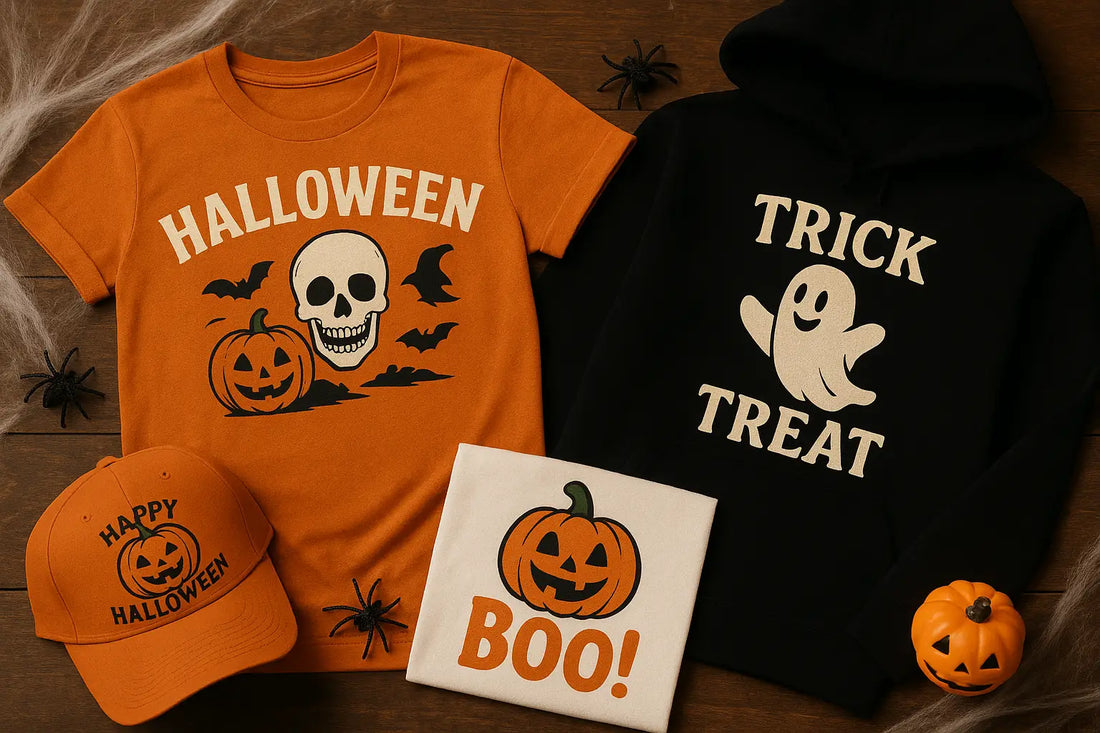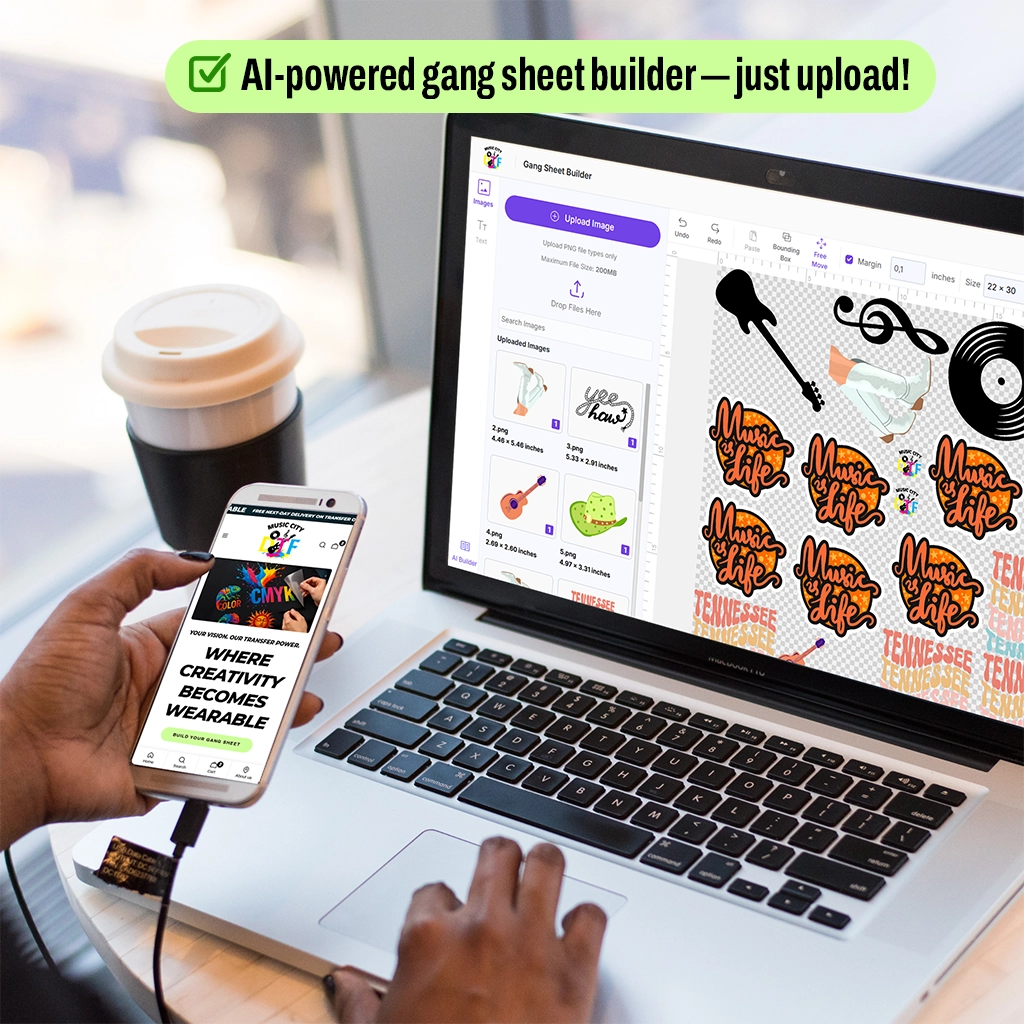Ever wonder why your DTF transfers sometimes peel or look faded? It might not be the design, but your heat press settings. Even a few degrees or seconds can mess things up. Halloween DTF transfers, ones with rich color details, respond to small temperature changes, so it’s key to dial those settings in.
For small business owners and designers, learning how to apply DTF transfers with proper heat press settings is super important for getting good quality prints. So if you are looking to create your next Halloween product line for 2025, read these six facts about heat presses that most people don't know, especially if you’re still learning heat press settings for DTF Halloween prints.
6 Tips for Holiday DTF Transfer Application Guide:
1. Wrong Temp = Ruined Design
Too Hot
There is a myth out there that turning up the heat makes the transfer stick better. That is not true! Too much heat can make the colors look dull, mess up the texture, and cause the adhesive to burn. In addition, too much heat can burn materials like polyester, which leaves marks or color changes.
Too Cold
If the press isn't hot enough (usually around 320°F–340°F for DTF transfers), the print won't stick right. It might look okay at first, but it will start peeling after you wash it. You need to apply DTF transfer step by step with a proper temperature settings for durable adhesion.
2. Uneven Pressure = Bad Prints
Uneven Plates
If your heat press plates aren't even, the pressure won't spread out right. That's why some parts of the design will stick great and others will peel or crack. To ensure quality, try a pressure test. Put a piece of paper on each corner of the plate. If one slides out easily, the pressure isn't even.
Material Matters
Different materials need different pressure. Thick hoodies need more pressure, and thin cotton shirts need medium pressure. If you forget to change the pressure, you might end up with parts of the design missing or damaged fibers. Always start with solid fabric prep for DTF application to get consistent results.
3. Time Isn’t Simple
Too Long = Faded Colors
Leaving the DTF transfer under heat for too long doesn’t make it last longer. It can actually ruin the ink. Too much time under the heat can dull colors and mess up details, like for designs with multiple colors.
Too Short = Weak Stick
If you don’t press it long enough, the glue won’t melt all the way. So the edges will start to lift quickly, and after you wash it once, the print might completely fall off. Always follow proper DTF transfer application instructions and adjust time based on fabric and design type.
4. Humidity Changes Everything
Moisture Messes Everything Up
Even if the heat press settings are good, dampness can mess up how well it sticks. Materials take in moisture, like cotton. This can cause bubbles or make parts not stick when you press.
Always pre-press garment before applying DTF for 3–5 seconds to get the moisture out before the real press.
Room Temperature Matters
If your room is cold or wet, the press will take longer to heat up, which can mess up the timing. Keep the room around 70°F (21°C).
5. Not All Heat Presses Are the Same
Cheap Presses = Bad Results
Cheap heat presses usually have heating parts that aren't even or wrong temperature numbers. You might think you're pressing at 330°F, but it's really 290°F on one side and 360°F on the other.
This means one part of the fabric sticks well, but the other flakes off after a few wears. If you really care about printing with DTF, then spend the money on a good press that spreads heat evenly. That’s key for Halloween shirt DTF transfer application and other detailed projects.
Check It Often
Even good machines change over time. Use a heat gun to make sure the press temperature matches what the screen shows. Then fix as needed.
6. Peeling Too Fast = Messed Up Press
Hot or Cold?
The wrong peel time can mess up a press, like in seconds. If it's a cold peel, peeling too soon can stretch the ink. If it's a hot peel, waiting too long can make the film hard to take off, and the color might come with it.
Re-Press
If you mess up the peel, just put parchment paper over it and press it for another 5–8 seconds. It can help. Keep your DTF pressing settings for Halloween designs in check to get the perfect peel every time.
Why Choose Music City DTF for Halloween DTF Transfers
At Music City DTF, we know that the right press needs the right transfer. Our DTF designs are made for good quality, even if the press is off a little bit. Heat press settings can make or break your DTF prints, and the secret is accuracy. When you understand how temp, time, and pressure all work, you'll learn how to apply DTF transfers like a pro. Want to test print quality? Order our Halloween DTF Transfers collection today to start pressing awesome designs for the upcoming spooky season!
Frequently Asked Questions
Q1: What heat press temperature do you recommend for DTF transfers?
For DTF transfers, aim for 320°F to 340°F. However, it really depends on what film and fabric you’re using. Check your supplier’s advice first. Too much heat, and your colors might fade or the material could burn. Not enough heat, and it won’t stick properly. For what it's worth, Music City DTF transfers do great in this range, especially with correct heat press settings for DTF Halloween prints.
Q2: Why are my DTF prints peeling after washing?
Peeling after washing is usually because of pressure, time, or temp issues; in other words, the heat press settings were off. If you didn’t press it long enough or it wasn’t hot enough could cause peeling. Also, peeling it at the incorrect temp (hot instead of cold, or the reverse) will cause issues. Apply DTF transfer step by step to find the sweet spot before printing a big batch.
Q3: How can I adjust my heat press if the pressure’s uneven?
Uneven pressure usually means the plates aren't even or the garment is too thick. Do the paper trick in each corner. If the paper slides out easily on one side, adjust the knob or level the press. With an even surface, your DTF transfer is more likely to stick flawlessly. Solid fabric prep for DTF application makes a big difference here too.
Q4: Can I reuse a DTF transfer if it didn't stick completely the first time?
If a corner lifts or it doesn't stick, put parchment paper on it and press again for 5–8 seconds with medium pressure. But be careful because too much heat melts the glue and messes up the details. Always check your DTF transfer instructions before re-pressing. Most importantly, always follow your DTF transfer application instructions for re-pressing.
Q5: How does moisture or too much humidity affect my DTF prints?
When you're heat-pressing, damp clothes can mess up the adhesive. So, give the garment a quick 3–5 second press first to get rid of any dampness, especially if it's humid where you are. For the best, longest-lasting prints, keep your workspace around 70°F (21°C). Always remember to pre-press garment before applying DTF to keep designs clean and durable.





